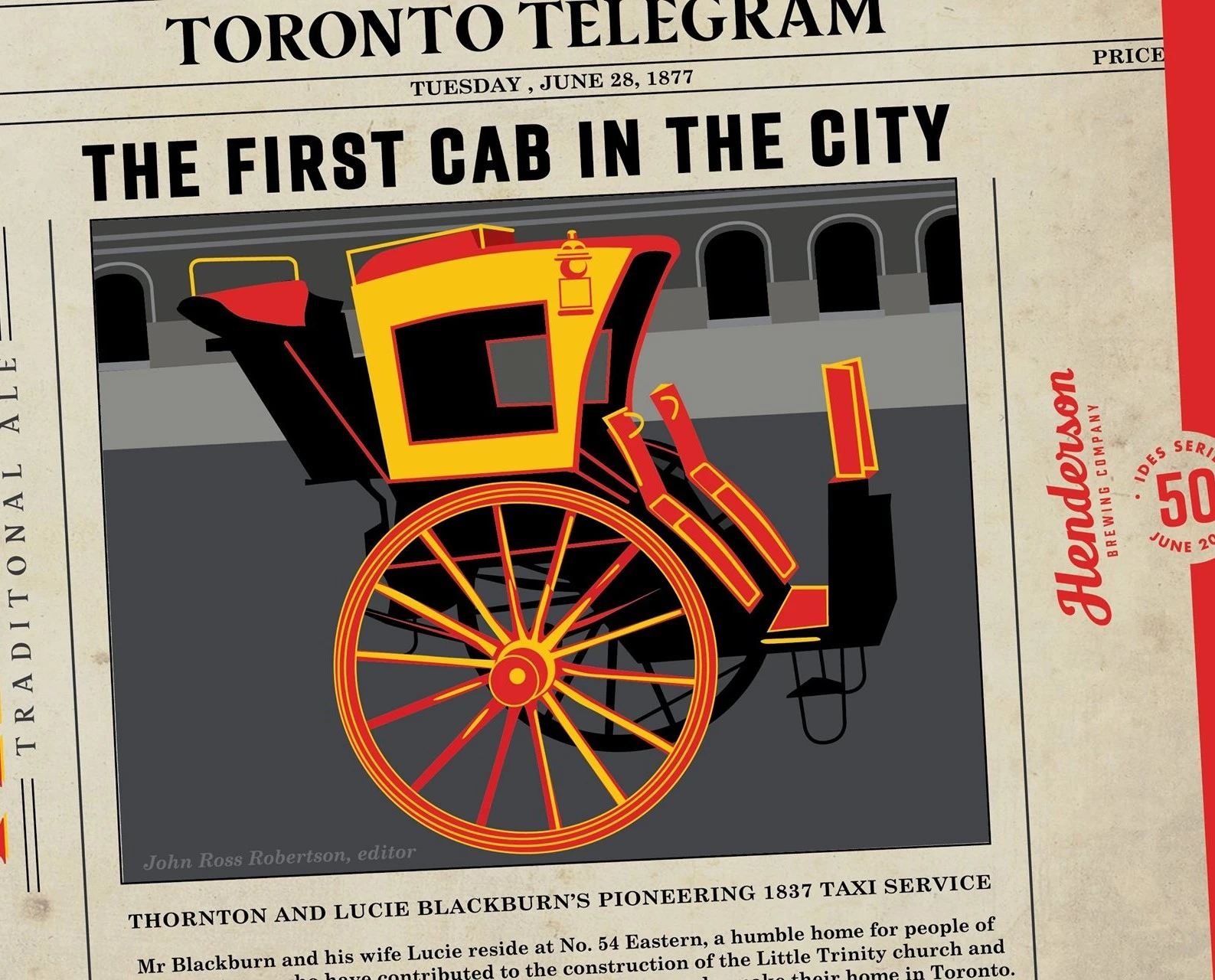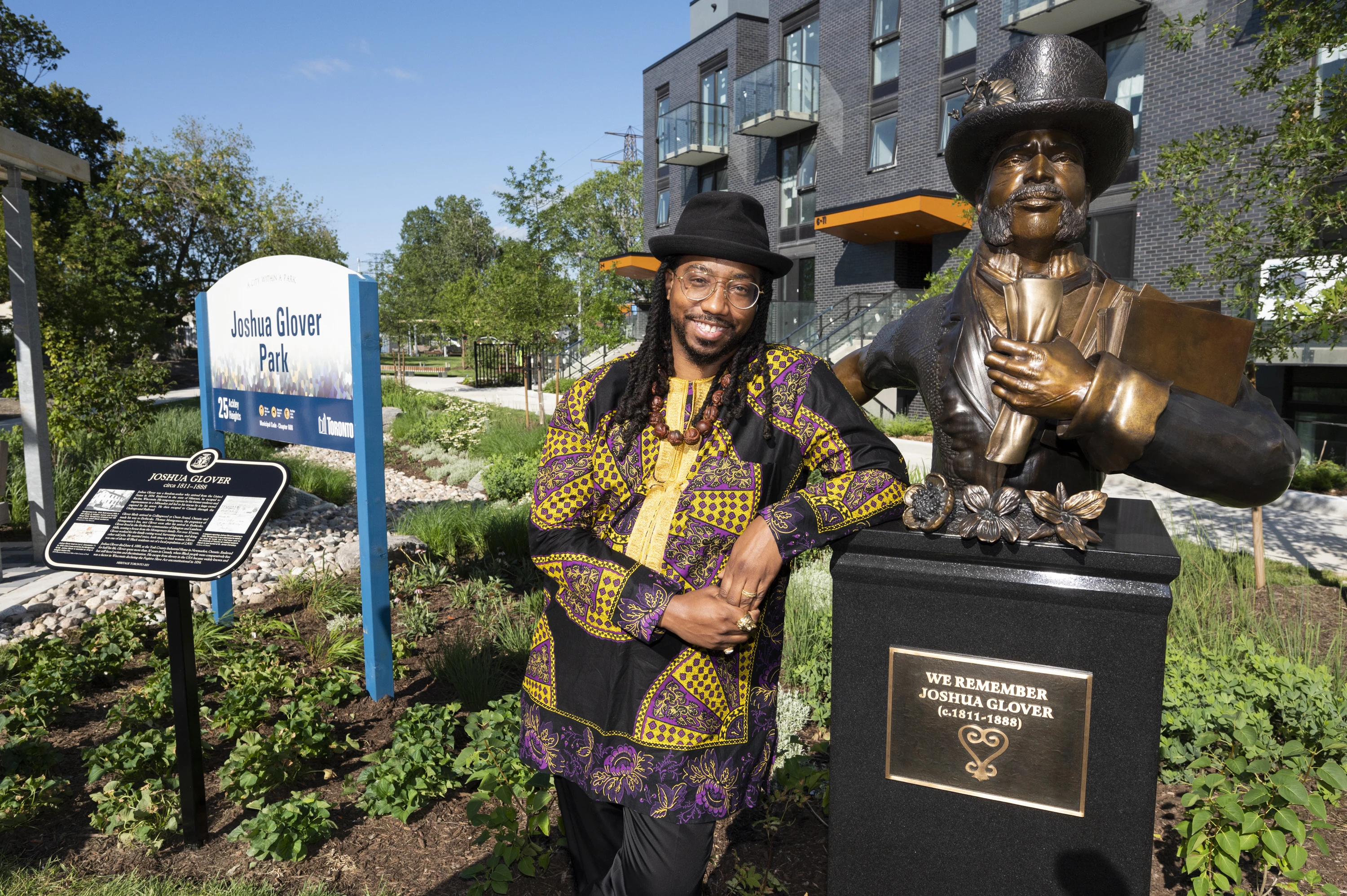
Lucie Blackburn
(c. 1803 - 1895)
We are delighted to commemorate Lucie Blackburn with a statue. This page showcases the creation process, featuring the talented artist Quentin VerCetty.
Lucie Blackburn's journey from slavery to freedom symbolizes resilience and courage. She escaped bondage with her husband, Thornton. They found refuge in Canada, offering hope to many. Lucie's entrepreneurial ventures broke barriers and empowered her community. Additionally, her activism against racial discrimination and slavery exemplified her commitment to justice. Her legacy inspires us with the transformative power of perseverance in the face of adversity. Watch Breaking Chains: Thornton and Lucie Blackburn's Journey from Enslavement to Freedom by Historica Canada to learn more about Lucie Blackburn’s story.
The Remarkable Journey of Thornton and Lucie Blackburn: From American Enslavement to Pioneers in Canadian Society
Lucie escaped slavery in Kentucky, USA, with her partner, Thornton Blackburn, and moved to Detroit, where Black people were free.
Despite managing to escape the legal bondage in Kentucky by secretly making their way to Detroit and living there without being apprehended, Lucie and Thornton were recognized by a slave-catcher from the South, captured and imprisoned, and destined to be returned to their owners. Detroit men against the incarceration broke Thornton out of his jail cell, while women supporters arranged for a lady to switch places with Lucie under the guise of praying for her while a meal was being served to prisoners. A huge crowd gathered in protest to ensure the couple could slip away. The escape became a highly charged event. The Blackburns slipped into Windsor, leaving behind the first race riot in the city, now known as the Blackburn Riot.
Unfortunately, the slave-catcher authority followed them to Canada. In 1833, Lucie and Thornton were imprisoned in Windsor, Ontario, because they were escaped slaves. However, abolitionist Lieutenant Governor John Colborne ordered their release, setting a legal precedent by testing the American Fugitive Offenders Act in court. This case influenced how British colonial authorities in Upper and Western Canada responded to American demands concerning escaped slaves for the next three decades.
Once on Canadian soil and subject to Canadian law, it was decided that escaped slaves would not be returned to the USA since the likely punishment they might receive there would exceed what might be experienced in Canada. This set a precedent and protected future fugitive slaves from being returned to the USA upon arrival under Canada’s legal system.
The court’s conclusions reinforced the security of the Underground Railroad, which the Blackburns later championed. Lucie and Thornton eventually made their way to Toronto, where they settled to build their lives and contribute to community advancement.
Historian Karolyn Smardz Frost noted, "Every American slave who found refuge in Canada before the Civil War, had reason to be thankful to Thornton and Lucie Blackburn," as their decisions made Canada a safe home for runaway slaves.
"The plaque features a wheel to symbolize the fact that the Blackburns started the first taxicab company in Toronto. The fern is the Pan-African semiotic from Ghana's Adinkra symbol iconography known as “aya”; it represents endurance and resourcefulness, which is Lucie and Thornton Blackburn’s entrepreneurial and freedom journey story." - Quentin Vercetty


While working as a waiter at Osgoode Law School, Thornton noticed that the city lacked a taxi service. Taking inspiration from the design of vehicles in Montreal and London, the Blackburns began the first taxi service in Toronto.
In 1837, Thornton and Lucie invested in creating a horse-drawn buggy cab capable of holding up to four passengers. They established Toronto's first taxi company, named "The City," which quickly became a well-known fixture on Toronto's streets.
The red and yellow taxi was easy to spot. The service was very successful, and it amassed a small fortune. The legacy of the taxi company can be seen in the brand colours of the Toronto Transit Commission (TTC) today, as they were inspired by the original colours of the Blackburn's taxi cabs.

"Lucie is carrying a suitcase – a visual metaphor for the role the Blackburns played in the Underground Railroad – bringing enslaved people to freedom. It also represents Lucie’s status as a businesswoman and landlord." - Quentin Vercetty
In addition to the taxi company, the Blackburns continued to build their wealth by purchasing properties throughout the city. Eager to share their success with former slaves such as themselves, the Blackburns became the last—and arguably most important—stop on the Underground Railroad. They built a one-story frame house and six other homes north of Osgoode Hall, in what was then St. John’s Ward, providing subsidized housing for fugitive slaves at $10 a year (equivalent to $240.80 today).
Lucie Blackburn managed their investment properties and even became a mortgage broker in her later years.
Lucie and Thornton helped build Little Trinity Anglican Church, Toronto’s oldest standing Anglican church, which served as the final stop on the Underground Railroad.
The Blackburn's journey to freedom and subsequent settlement in Canada offered hope to many enslaved individuals seeking liberation from oppression. Lucie’s story is even more remarkable in light of the fact that as an entrepreneur alongside her husband, Lucie achieved more than many do today, without children, and without ever learning to read and write.
She was 92 years old when she passed away.
Artist Bio
Quentin VerCetty is an award-winning multidisciplinary artist known for pioneering Afrofuturist narratives and cultural activism. His iconic Joshua Glover statue, Toronto's first monument celebrating African heritage, earned him the 2021-22 Fine Art Award. As the first artist commissioned by Carnegie Hall for their Afrofuturism-themed season, VerCetty coined terms like "Sankofanology" and "Rastafuturism." He founded the Black Speculative Arts Movement Canada in 2016 and AstroSankofa Arts Initiatives in 2022. VerCetty's passion for community empowerment and ancestral homage infuses his work, inspiring hearts and minds worldwide.

REFERENCES:
Historica Canada. (2023). Citizenship Challenge Breaking Chains: Thornton and Lucie
Blackburn's Journey from Enslavement to Freedom. Breaking Chains: Thornton and Lucie Blackburn's Journey from Enslavement to Freedom | Historica Canada
Panday, Art. Waterfront Toronto. (Feb. 16, 202). I design I DESIGN, PUBLIC ART, WALKABLE
NEIGHBOURHOODS. Lucie and Thornton Blackburns' Legacy on the Waterfront | Waterfront Toronto (waterfrontoronto.ca)
Smardz Frost, Karolyn. (February 28, 2023). Thornton and Lucie Blackburn. The Canadian
Encyclopedia. https://www.thecanadianencyclopedia.ca/en/article/thornton-and-lucie-blackburn
Smardz Frost, Karolyn. (June 17, 2007). I've Got a Home in Glory Land: A Lost Tale of the
Underground Railroad. New York Times, (book series reading except). ‘I've Got a Home in Glory Land’ - The New York Times (nytimes.com)
The Canadian Encyclopedia. Thornton and Lucie Blackburn. February 28, 2023.

